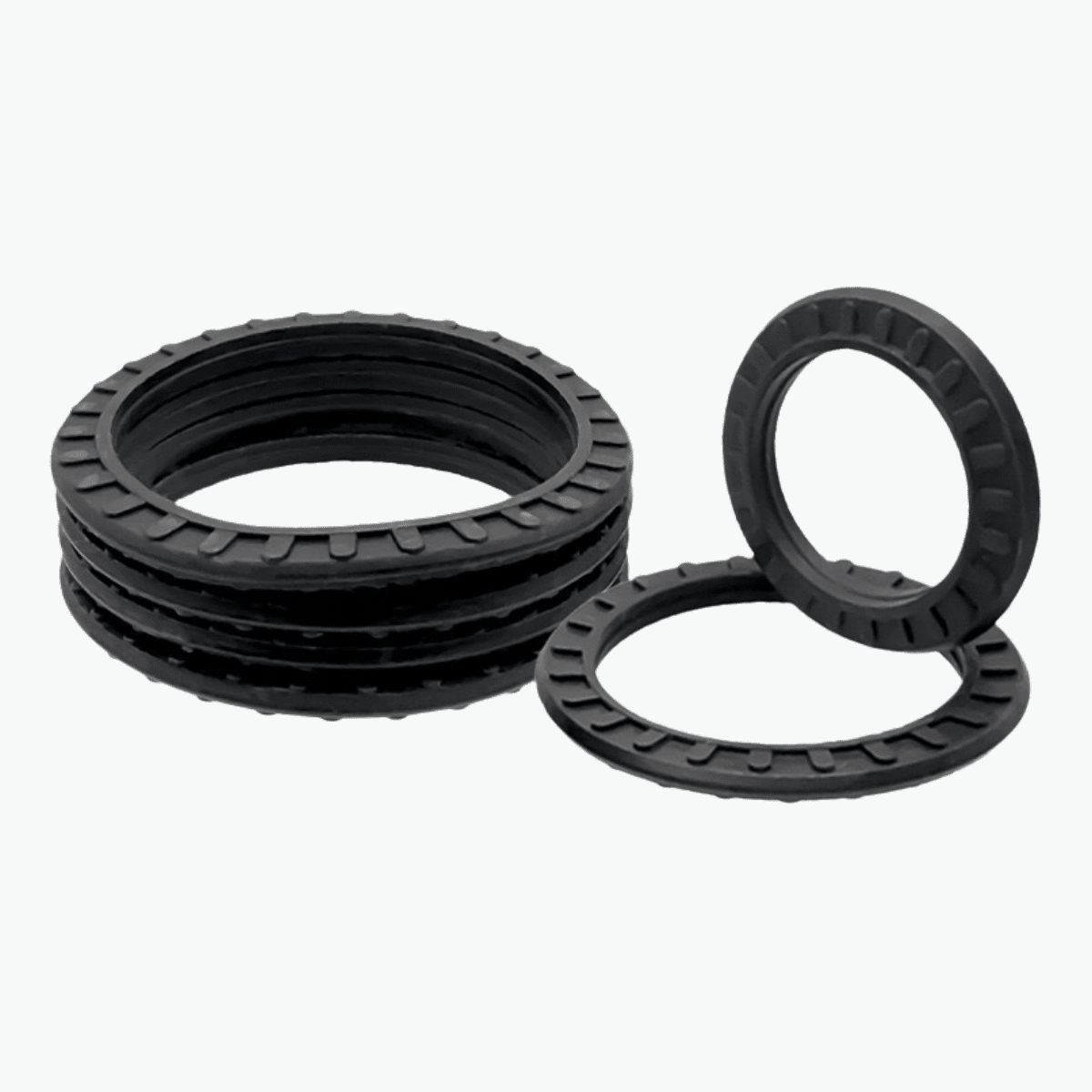Choosing the right material for pneumatic cylinder seals is essential for ensuring durability, minimizing air leakage, and maintaining system efficiency. Among the many materials available, TPU (Polyurethane) and NBR (Nitrile Rubber) stand out as the best choices for most pneumatic applications.
In this guide, we will explain why TPU & NBR seals are preferred, their advantages, and how to choose between them.

What Is the Best Material for Pneumatic Seals?
The material of a pneumatic seal directly affects its lifespan, wear resistance, and compatibility with different operating conditions. Choosing the wrong material can lead to:
- Seal hardening or swelling due to chemical exposure
- Premature wear and leakage in high-speed applications
- Reduced efficiency and increased maintenance costs
That’s why TPU & NBR are the most reliable choices for pneumatic sealing.
Why Should You Use TPU for Pneumatic Seals?
TPU seals are widely used in high-speed and high-pressure pneumatic systems due to their exceptional wear resistance and mechanical strength.
Key Advantages of TPU Seals:
- Superior abrasion resistance – Long-lasting durability in dynamic applications
- Good elasticity & flexibility – Reduces friction in high-speed movements
- Oil & chemical resistance – Performs well in hydraulic fluids and lubricated systems
- Withstands low temperatures – Operates efficiently from -40°C to 90°C
Best Applications for TPU Seals:
- Heavy-duty industrial pneumatic cylinders
- High-speed automation systems
- Automotive air suspension and braking systems
📌 Common TPU Seals: DPRS Piston Seal, PP Kaifu Buffer Seal, EM Dust Seal
Check out our full range of dust wiper seals for enhanced durability.
Why Is NBR Ideal for Cost-Effective Pneumatic Seals?
NBR seals are known for their affordability, flexibility, and excellent oil resistance.
Key Advantages of NBR Seals:
- Good resistance to oils & greases – Ideal for lubricated air systems
- Affordable and easy to manufacture – Cost-effective for large-scale applications
- Maintains flexibility at moderate temperatures (-30°C to 100°C)
- Resistant to general wear & tear – Suitable for standard pneumatic applications
Best Applications for NBR Seals:
- General-purpose pneumatic cylinders
- Low-pressure air systems
- Industrial automation with moderate conditions
📌 Common NBR Seals: QYD Shaft Seal, PZ Piston Seal, DOP Dust Seal
Explore additional solutions for O-ring kits for quick replacements.
TPU vs. NBR – Which One Should You Choose?
Each material has unique properties, making them suitable for different applications.
| Feature | TPU (Polyurethane) | NBR (Nitrile Rubber) |
|---|---|---|
| Temperature Range | -40°C to 90°C | -30°C to 100°C |
| Wear Resistance | High | Moderate |
| Oil Resistance | Excellent | Good |
| Abrasion Resistance | High | Moderate |
| Best For | High-speed, high-wear applications | Standard pneumatic sealing |
📌 Not sure if TPU or NBR is right for you? Compare them in detail here.
For high-wear and high-speed conditions, TPU is the best choice. For standard applications, NBR is more cost-effective.
How to Select the Right Pneumatic Seal Material?
When choosing a pneumatic seal material, consider these factors:
📌 Operating Temperature – TPU for low-temperature flexibility, NBR for moderate temperatures
📌 Wear Resistance – TPU is ideal for high-speed, high-friction environments
📌 Oil Compatibility – Both NBR and TPU offer excellent oil resistance
📌 Cost & Availability – NBR is the more cost-effective option
Explore our Pneumatic Cylinder Seals Guide for detailed comparisons.
Where to Buy High-Quality TPU & NBR Pneumatic Seals?
If you need durable and high-performance TPU & NBR pneumatic seals, we offer:
✅ Rod Seals, Piston Seals, Buffer Seals & Wiper Seals
✅ Materials: TPU, NBR, FKM, PTFE
✅ OEM & Bulk Orders Available
Need custom TPU or NBR seals? We offer bulk and custom solutions.
📌 Looking for premium pneumatic seals? Contact us today for a quote or consultation!
📞 WhatsApp: +86-17622979498
Conclusion
Choosing the right pneumatic cylinder seal material is essential for optimizing performance, reducing air leakage, and extending system lifespan.
Browse Related Guides
- How to Extend Pneumatic Seal Lifespan
- Piston Seal Types & Materials
- TPU and NBR Seals for Pneumatic Systems


